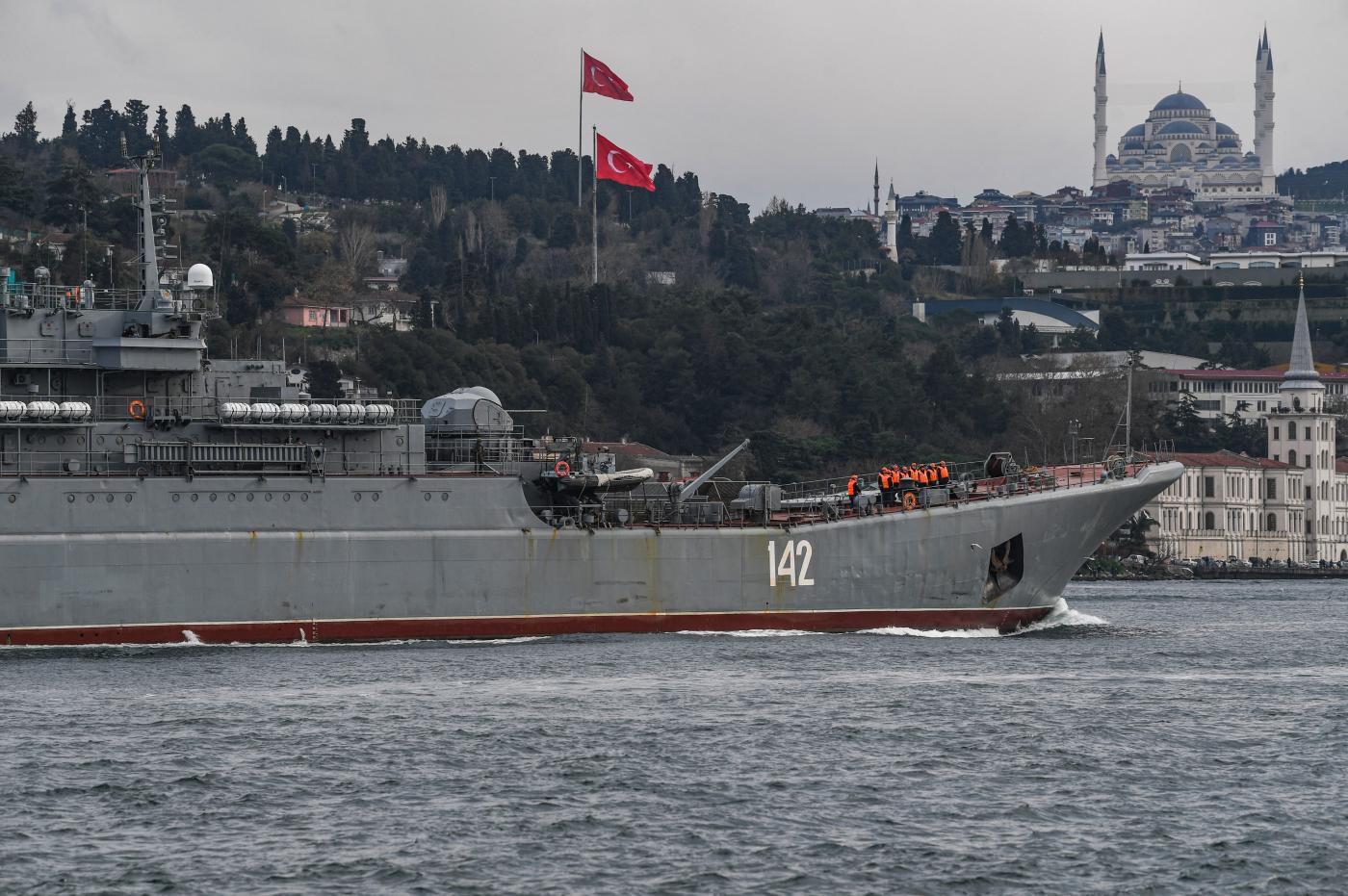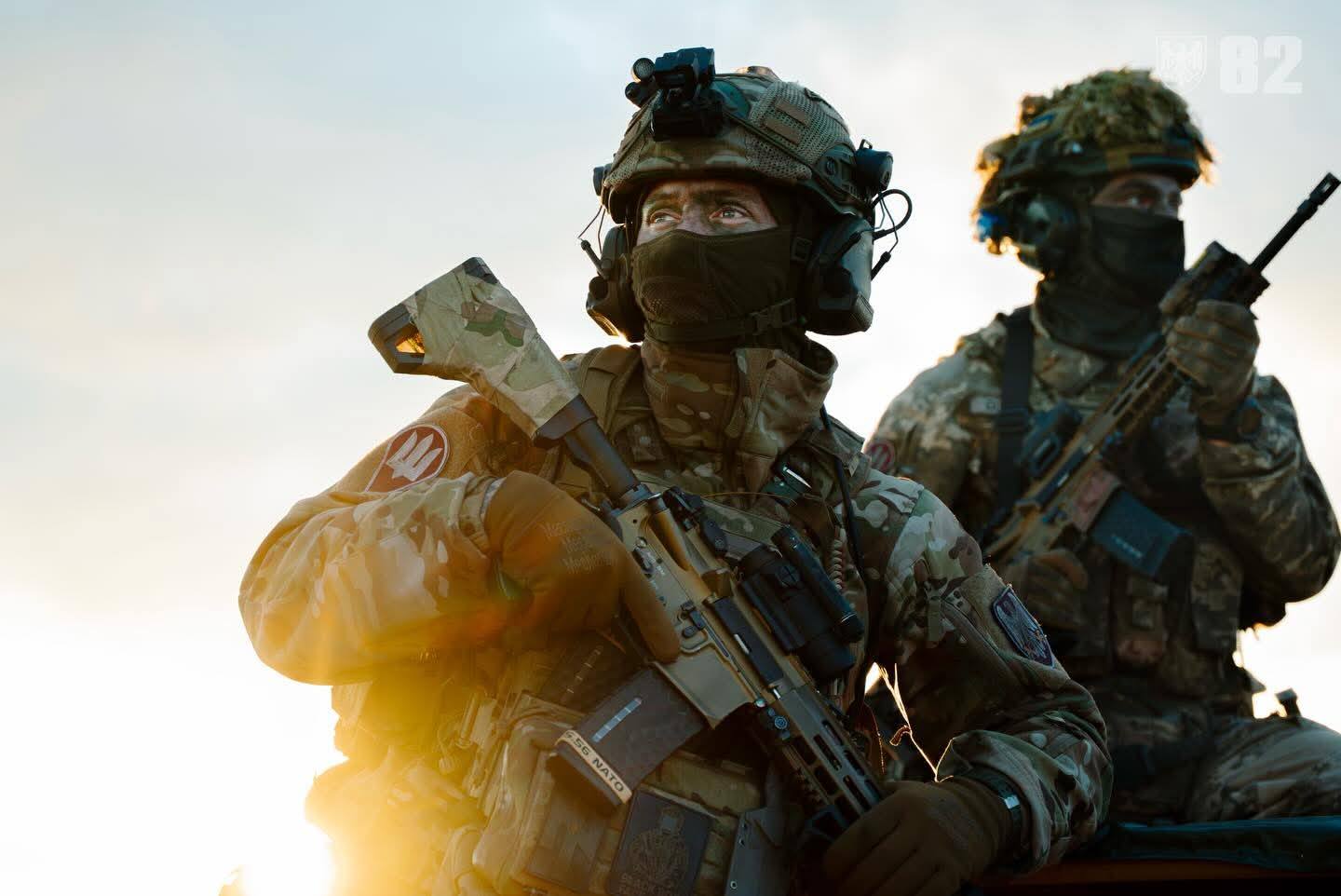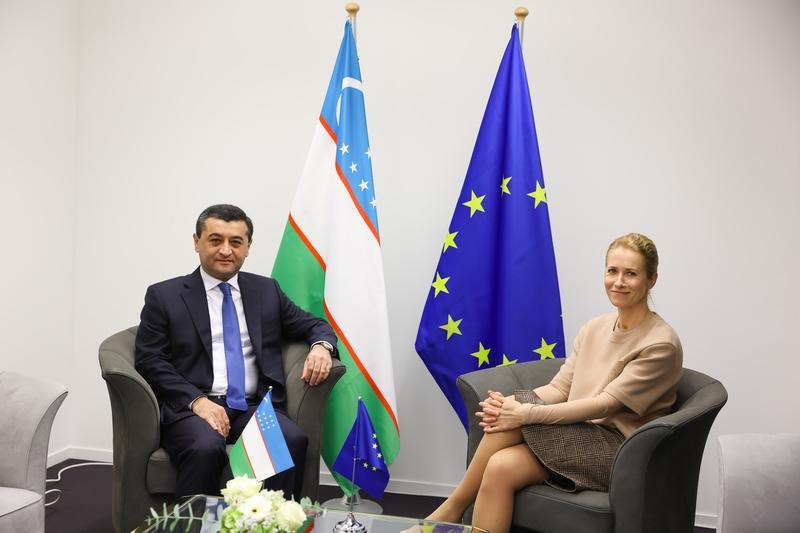
Turkish Closure of the Straits Can Hurt Russia’s Syrian Route Should the War Prolong
Turkish Closure of the Straits Can Hurt Russia’s Syrian Route Should the War Prolong
On February 24, Ukraine asked Turkey to close the Turkish Straits (the Bosporus and Dardanelles) to Russian warships under the 1936 Montreux Convention (Daily Sabah, February 24). The Straits connect the Mediterranean to the Black Sea, providing the only way in and out between the two bodies of water. Ruling that the conflict had turned into a full-fledged war, the Turkish administration invoked Article 19 of the Convention (Haberturk, February 24), and restricted the warring parties’ ships from passage. Any vessels organically belonging to Black Sea ports will be exempted from those limitations.
Had Turkey been a belligerent in the war, or if it were to decide that a threat to its national security was imminent, the Montreux regime would legally permit Ankara to close the Turkish Straits entirely. This is not the case for the time being. And in an Article 19 situation, non-riparian parties’ passage is allowed to continue uninterrupted, as during peace time (Treaties.un.org, accessed March 2).
By partially closing the Straits under Article 19, the Turkish government had showed its tacit support to Kyiv “in its own unique way.” Ankara’s legal and diplomatic stance looks neutral on its surface, voicing that the two Black Sea riparian militaries of Russia and Ukraine are fighting, while Turkey is staying out of the conflict. In practice, however, the decision to block the Straits to the warring parties does not affect Ukraine directly in any practical way since Ukraine—unlike Russia—has no other ships outside the Black Sea theater that it would want to bring in, nor is it running any Mediterranean operations. In fact, following Ukraine’s loss of its naval deterrent after the Russian annexation of Crimea, it was Turkey that played a major role in re-building the Ukrainian Navy by signing a deal to produce Ada-class corvettes (MILGEM project) at the Mikolayiv shipyard (Anadolu Agency, August 19, 2021). Relying on Article 19 in its decision neatly fits in with traditional Turkish foreign and security policy, which attaches utmost importance to the current legal regime on the Straits established back in the Ataturk era. The Montreux Convention, intact since then, remains at the epicenter of broader Turkish strategic culture and foreign policy planning.
From a military standpoint, Turkey’s closure of the Straits will not drastically alter the ongoing Russian campaign in the Black Sea. Broadly speaking, the Russian Military-Maritime Fleet (Voyenno-Morskoy Flot—VMF) already has a visible upper-hand vis-à-vis Ukraine’s naval capacity in the maritime theater of operations, since the latter lost the bulk of its platforms following the Russian invasion of Crimea. While, specifically, the Russian Black Sea Fleet has already been operating its organic surface vessels and submarines, equipped with Kalibr cruise missiles, in the area of operations. On March 2, Belarusian President Alyaksandr Lukashenka seemingly committed a blunder by showcasing the Russian plans to conduct an amphibious assault on Odesa (Twitter.com/CovertShores, March 2). Open-source evidence reveals the formidable concentration of VMF landing vessels from the Baltic and Northern fleets in the Black Sea (T.me/UkrainaOnlline, March 2). And in addition to the 810th Naval Infantry Brigade garrisoned in Crimea, elements from the 155th Naval Infantry Brigade of the Pacific Fleet and 366th Naval Infantry Brigade from Kaliningrad are also already positioned as part of the Russian buildup (Usni.org, February 8; Twitter.com/RALee85, January 14).
With an amphibious assault on Odesa expected soon (The Telegraph, March 3), the Russian military has no need to deploy any additional asset to the Black Sea Fleet. Nonetheless, the Turkish decision could negatively affect another aspect of Russia’s military posture—Syria.
The Russian contingent in the Levant relies on two main supply routes. One is the air bridge between Russia proper and its extraterritorial Hmeimim Airbase, in Latakia. The second and busier route remains the naval bridge extending all the way from Sevastopol to Tartus, via the Bosporus and the Dardanelles. The Russian navy’s Ropucha- and Alligator-class landing vessels are regularly observed running the “Syrian Express” along this route (TASS, February 8).
From now on, everything will depend on the prolongation of the war—namely, how tough and how long the Ukrainian military and people resist. As long as the war continues, Turkey will keep exercising the partial closure of the Straits under Article 19 of the Montreux Convention. Ankara’s policy means no return for the Baltic and Northern fleet landing ships once they exit from the Black Sea. Moreover, the vessels from the Black Sea Fleet will not be able to travel back and forth, leaving the Russian Group of Forces in Syria reliant completely on the air bridge, which is limited in cargo and expensive to operate.
Furthermore, the prolongation of the war will adversely affect Russian submarine activity in the Eastern Mediterranean. In recent years, the Tartus base was turned into a submarine hub for the Russian navy (TASS, September 2017). Likewise, Black Sea Fleet platforms, including the flagship Moskva missile cruiser, have carried out regular tours into the Mediterranean (Sputnik News, December 2015). The “Kalibrization” of the Russian VMF—that is, equipping several naval platforms with these cruise missiles—have formed a long-range, conventional precision-strike asset for the Russian naval forces operating in the Mediterranean. But if the war prolongs, this demonstrative deterrent will also be crippled. Although the Tartus base can host Black Sea Fleet vessels for some time, it cannot offer a permanent forward-homeport for a large armada.
Given the already massive Russian naval buildup in the Black Sea theater and Ukraine’s limited capabilities there, Turkey’s decision to invoke Article 19 of the Montreux document will not upset Moscow’s ongoing aggressive war against its southwestern Slavic neighbor. However, if the Ukrainian military and people can manage to prolong the war, Russia’s strategic logistical route extending to the Levant (namely the “Syrian Express”), not to mention its freedom of operations in the Eastern Mediterranean, can end up being seriously hampered.


